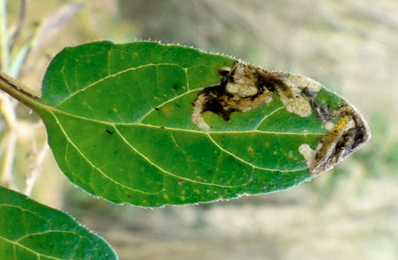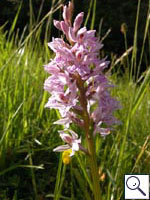|
||||||
|
DACTYLORHIZA. Common-spotted Orchid and Marsh Orchids. [Orchidaceae] |
|
|
Seven species of Dactylorhiza are recorded in Britain. All are native species and include Common-spotted orchid (D. fuchsii), Early Marsh-orchid (D. incarnata), Heath spotted-orchid (D. maculata), Lapland Marsh-orchid (D. traunsteineri lapponica), Narrow-leaved Marsh-orchid (D. traunsteineri traunsteineri), Northern Marsh Orchid (D. pupurella), Southern Marsh-orchid (D. praetermissa) and Western Marsh-orchid (D. majalis). Dactylorhiza majalis is treated as Dactylorhiza kerryensis by Stace (2010). The Lapland Marsh-orchid (D. lapponica) is protected under Schedule 8 of the Wildlife and Countryside Act, 1981. The Narrow-leaved Marsh-orchid (D. traunsteineri) is protected in Northern Ireland under Schedule 8 of the Wildlife (Northern Ireland) Order, 1985. Four British miners are recorded on Dactylorhiza. A key to the European miners recorded on Orchis including Dactylorhiza is provided in Bladmineerders van Europa. |
|
Key for the identification of the known mines of British |
1a > The larva first tunnels in the rootstock and the stem. From there long, untidily delineated corridors are made into the leaves. Pupation in the underground parts of the plant. |
|
Delina nigrita (Fallén, 1819) [Diptera: Scathophagidae] |
1b > Leaf-miner: The mine begins as a fine corridor, descends into the leaf sheath or stem, re-enters from there a few more times in the blade. Pupation in the tuber. Ofen the inflorescence of infested plants will wilt. |
|
Chyliza vittata Meigen, 1826 [Diptera: Psilidae]. |
1c > Leaf-miner: Large blotch with a group of some larvae. At the start of the mine a group of elliptic egg shells. The larvae make individual mines which then merge to form an upper surface blotch. The larva leaves the mine to pupate. |
|
Parallelomma vittatum (Hering, 1826) [Diptera: Scathophagidae]. |
| 1d > Leaf-miner: Rather narrow corridor, untidy and sometimes branched, starting from the base of the leaf, in particular the midrib. Sides of the corridor irregularly eaten out, not really parallel. Frass mostly present, and then in a central line. The larva is capable of leaving the mine and start a new one elsewhere. These later mines are much broader, and the frass is scattered irregularly.. |
 Mine of Orthochaetes insignis on Prunella vulgaris Image: © Jean-Yves Baugnée (Bladmineerders van Europa) |
|
Orthochaetes insignis (Aube, 1863) [Coleoptera: Curculionidae] |
| Last updated 03-Jul-2019 Brian Pitkin | ||

